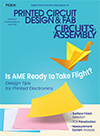Report: HDD to Slow in Auto Entertainment Market
Published: 12 August 2008
by Staff
PORTSMOUTH, ENGLAND – Growth in shipments of automotive hard disc drives could slow in the late stages of the next decade, as shipments of systems featuring high-density flash memory begin to rise, says researcher Semicast.
In comparison to other consumer goods, such as personal video recorders, portable media players and laptop computers, the storage capacity of automotive entertainment systems, especially embedded navigation systems, has risen only slowly in recent years, according to the firm. For example, many factory fitted navigation systems offered in 2008 have a storage capacity of around 20GB, which is the same as the aftermarket HDD navigation systems originally introduced by suppliers such as Alpine and Pioneer to the Japanese market in 2001.
The phenomenal increase in the storage capacity of many consumer goods has typically been driven by the desire to store video. Thus, the slow increase in the storage capacity of navigation systems can perhaps be best explained by the need to store only the navigation database and compressed audio files (MP3/WMA), where 20GB is usually more than sufficient, says Semicast.
With legislation in most regions of the world banning the viewing of video in the front seats, it is questionable, therefore, if mainstream navigation systems will need to substantially increase storage capacity above current levels, even in the long term. At present, even the highest capacity aftermarket navigation system offers storage of 40GB, representing only double the capacity of the original systems introduced seven years ago, according to the firm.
"With the storage capacity of automotive entertainment systems set to increase only gradually, it is judged most likely that these systems will fall into the territory of flash memory storage, causing shipments of HDDs in cars to stall," said Colin Barnden, Semicast principal analyst.
While the existing cost per gigabyte of flash memory prevents its use for mass storage in mainstream automotive entertainment systems, continued rapid price erosion from chip suppliers such as SanDisk, coupled with only slowly increasing storage requirements, are steadily bringing the crossover point into view. Thus, as the cost per gigabyte of flash memory drops, so in the long term suppliers of automotive entertainment systems will almost certainly begin to design-out HDD in favor of a high-density flash memory solution. Flash memory offers vital automotive benefits over HDD, such as no moving parts, less susceptibility to vibration and shock, improved mean time between failure and operation over a wider temperature range, says Semicast.
Accordingly, Semicast believes HDD may prove to be only an interim solution in automotive entertainment, with its long-term use possibly limited only to high capacity systems such as some aftermarket navigation systems and high-end rear seat entertainment systems that compress and store movies or record TV. This scenario would mirror that seen already in consumer portable media players, where lower capacity products intended primarily for storing audio already use flash memory (typically up to 32GB), while video-based products such as the iPod classic and Archos 705 provide storage up to 160GB using HDD.
Press Releases
- SEHO North America to Host Academy Training in Cincinnati in October
- vAI from Viscom – Enhancing Performance with Artificial Intelligence at productronica India 2025
- Scanfil ranks in the top five percent of companies in EcoVadis sustainability assessment
- ECIA Executive Conference Committee Finalizes Program for “Amped Up, the Power of Tomorrow”







